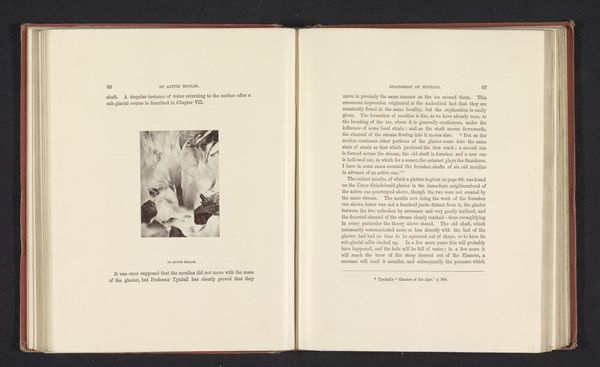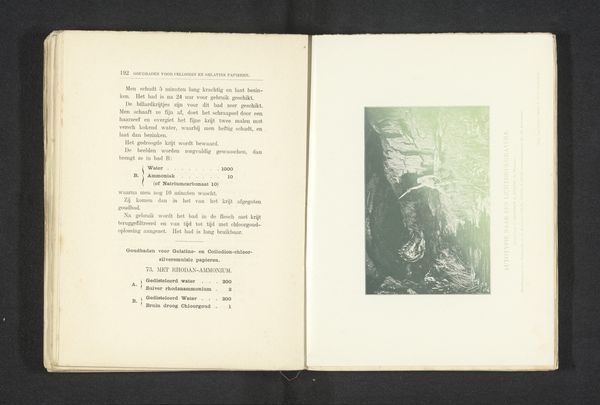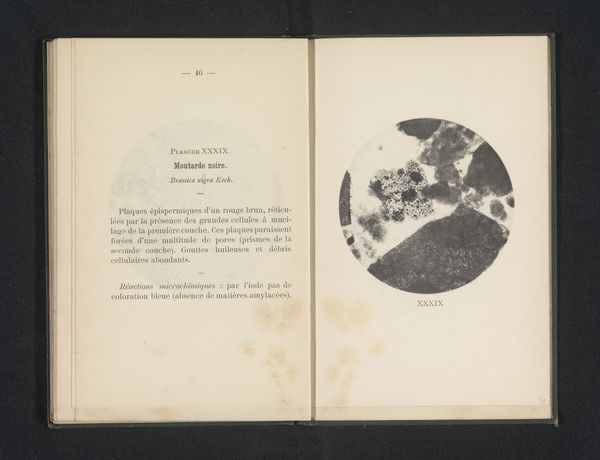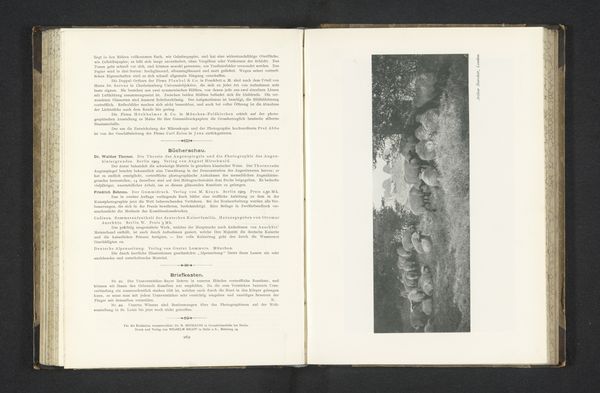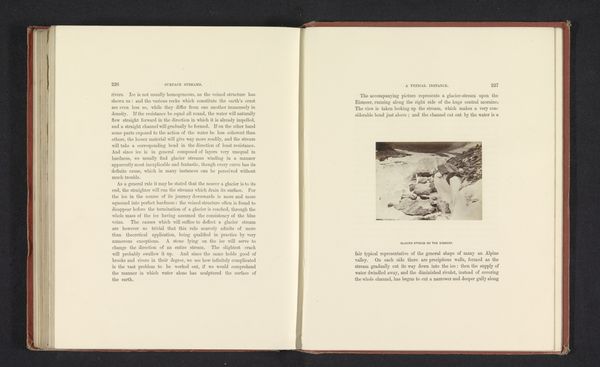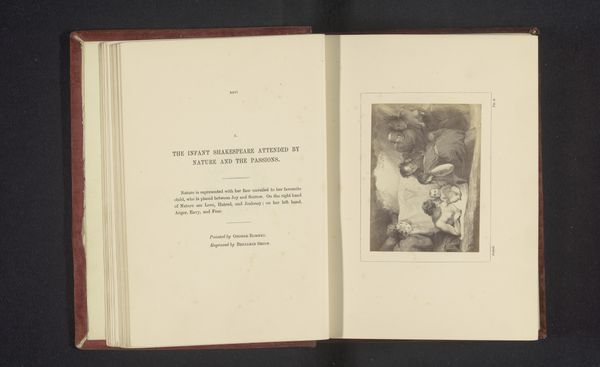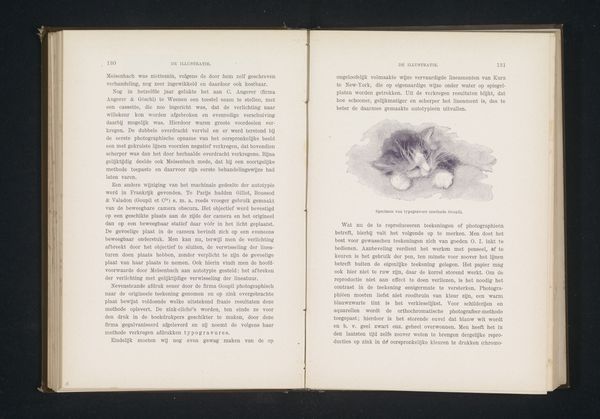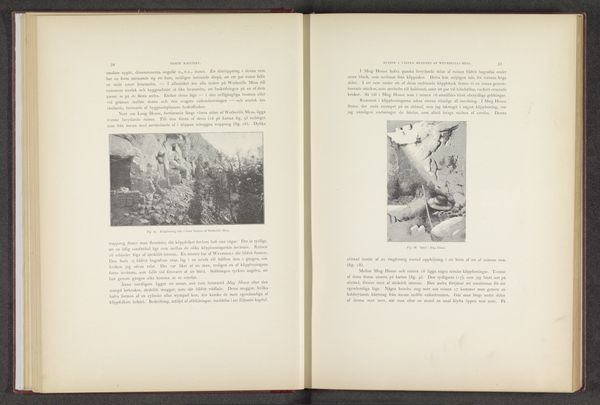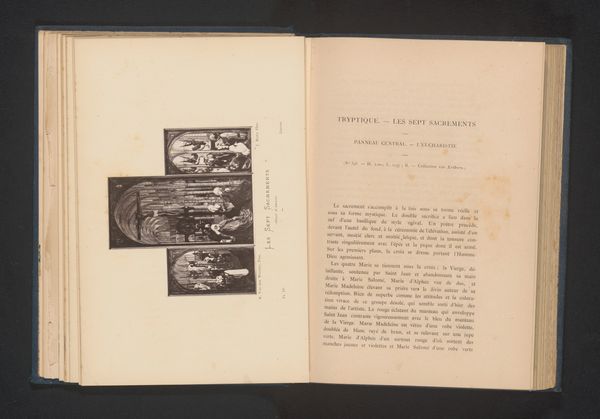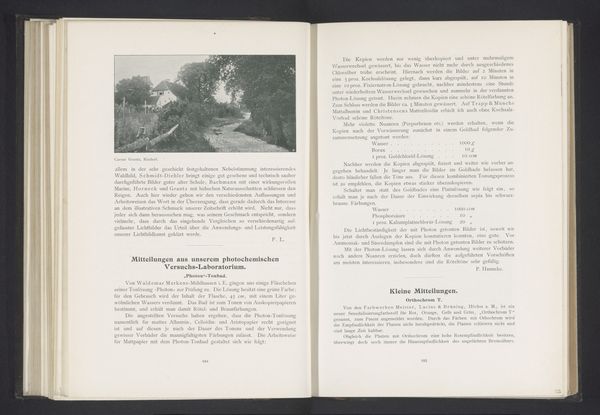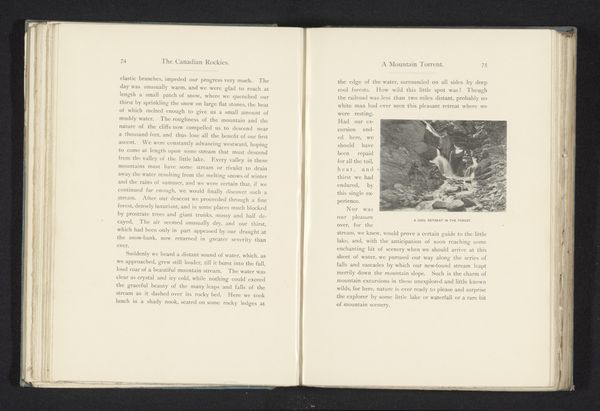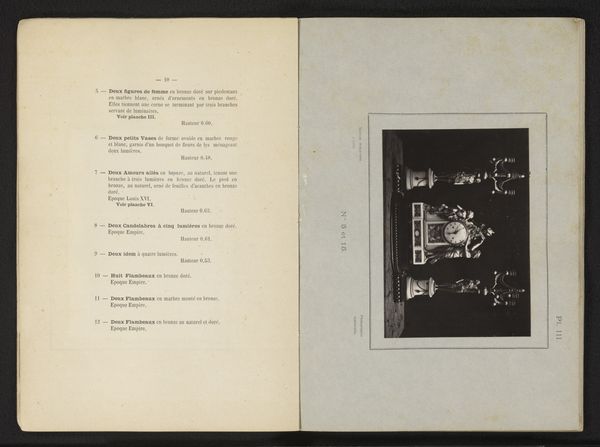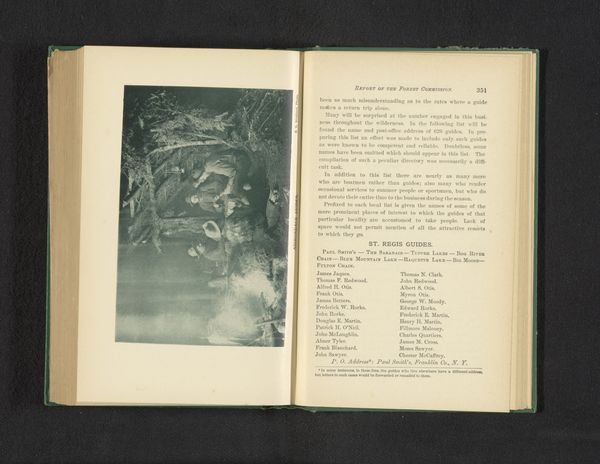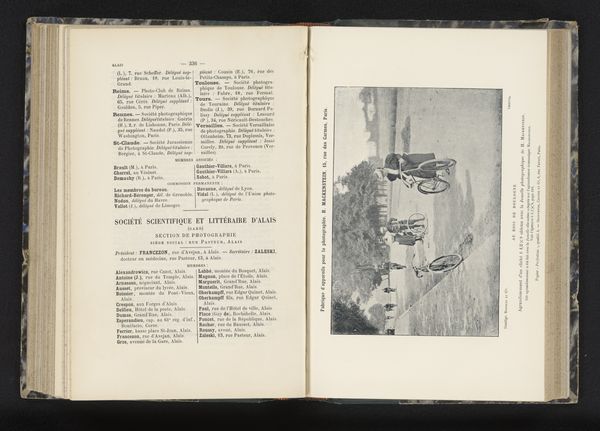
print, photography, gelatin-silver-print
# print
#
photography
#
gelatin-silver-print
#
academic-art
#
realism
Dimensions: height 62 mm, width 100 mm, height 280 mm, width 210 mm
Copyright: Rijks Museum: Open Domain
Curator: Let's consider this fascinating gelatin silver print from 1929 entitled "Pathologische Anatomie," created within the Hospitaal Batak Instituut. The photograph, clinical and stark, showcases pathological specimens, seemingly parts of internal organs, pinned and presented for study. Editor: It certainly provokes a visceral response. The stark contrasts, the almost sculptural arrangement of the biological matter...it's unsettling, yet I can't look away. There is an unnerving fascination with what a body contains, presented so plainly here. Curator: The visual symbols speak volumes about the history of medicine and its evolving understanding of disease. In the 1920s, visual representation was key in communicating medical knowledge. It serves as a window into the specific social and historical context in Sumatra. The print probably formed part of a larger academic effort in cataloging medical issues in the region. Editor: Absolutely. Looking closer, the details evoke a historical tapestry where local and European understanding may intertwine. I read the prints as more than clinical representations. What narrative does it hold on identity and class, and the power relations in medicine under colonial control? Curator: The use of black and white accentuates a starkness, perhaps reflecting the prevailing attitude towards disease as something to be objectively examined, categorized, and ultimately conquered. It’s impossible not to acknowledge the power dynamics embedded within these archival practices. How colonial medical institutions were shaping—or misshaping—the understanding of bodies. Editor: It makes you reflect on what has not changed, and who is served by specific knowledge in medicine and institutions. Even with its scientific intent, the composition and imagery resonate emotionally— almost like a morbid still life— forcing you to think beyond sterile data. Curator: This analysis illuminates just how powerfully charged "Pathologische Anatomie" truly is, extending its reach from documentation into domains of power, perception, and history. Editor: A stark reminder that scientific images aren't objective; they're constructed representations rife with symbolic meanings and subject to interpretations informed by shifting cultural lenses.
Comments
No comments
Be the first to comment and join the conversation on the ultimate creative platform.
